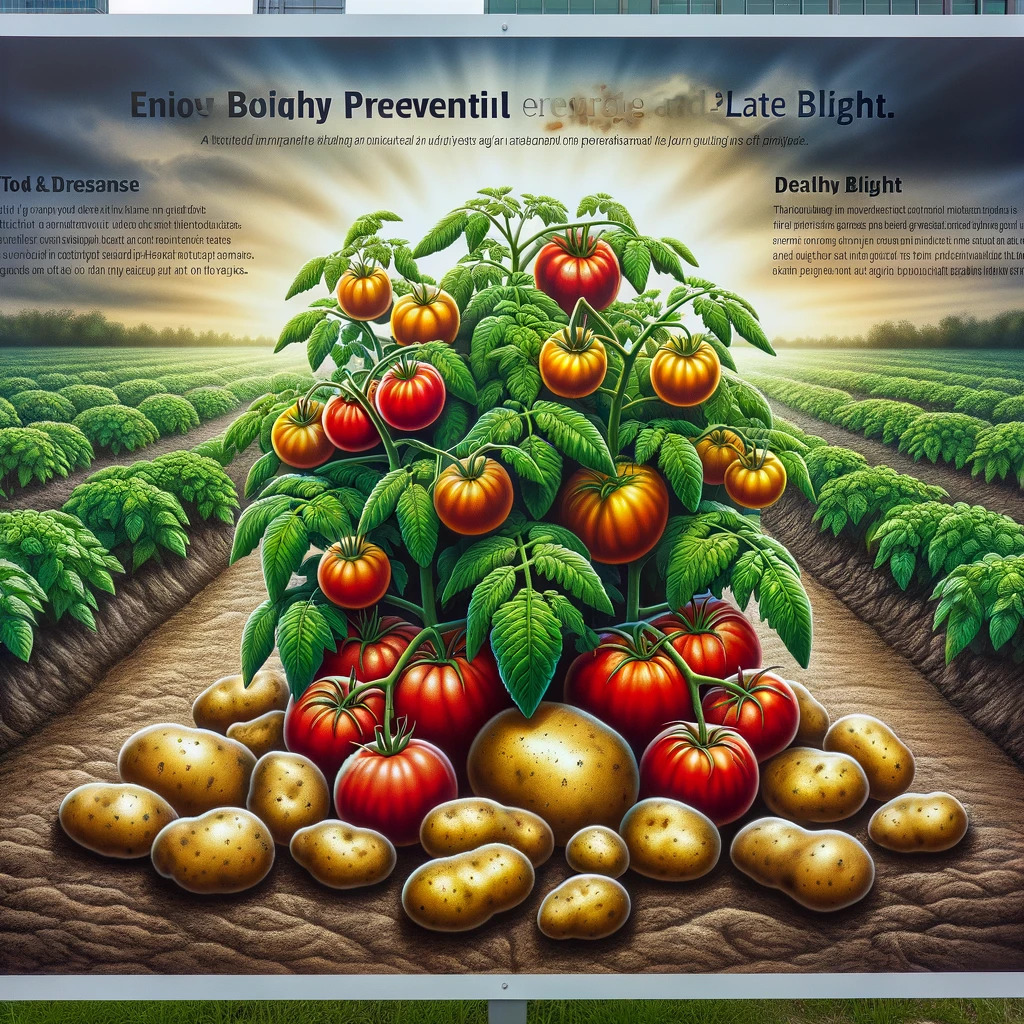A Double Challenge in Agriculture
Early blight and late blight are devastating fungal diseases that primarily affect tomato and potato crops. Caused by different pathogens, these diseases can lead to significant losses if not managed properly.

Understanding Early and Late Blight
- Early Blight: Caused by the fungus *Alternaria solani*, it manifests as dark spots on leaves, stems, and fruits. It is more common during warm and humid climates.
- Late Blight: Caused by *Phytophthora infestans*, it is famous for its role in the potato famine in Ireland. It causes dark spots on leaves and stems and can quickly destroy crops under wet and cool conditions.
Identification and Symptoms
It is crucial for farmers to recognize the early signs of both types of blight to intervene in a timely manner. Dark spots and wilting are key indicators.

Affected Crops and Impact on Production
Although tomatoes and potatoes are the most affected, other plants in the Solanaceae family can also be susceptible. These diseases can dramatically reduce crop yields and quality.
Prevention and Management Strategies
To manage early and late blight, farmers can adopt several strategies:
- Crop rotation and selection of resistant varieties: Reduce the presence of pathogens in the soil and choose less susceptible varieties.
- Cultivation environment management: Ensure good air circulation and avoid excessive moisture.
- Proper irrigation practices: Avoid overwatering and wetting of leaves and stems.

Treatment and Control
- Fungicides: The use of fungicides can be effective, especially when applied at the onset of the disease.
- Biological control: Research is underway to develop biological control methods.

Conclusion: Protecting Tomato and Potato Crops
Effective management of early and late blight is crucial to ensure the health and productivity of tomato and potato crops. With the implementation of appropriate agricultural practices and constant vigilance, farmers can minimize the impact of these diseases.
Long-tail Keywords: Strategies for Controlling Early and Late Blight, Early Identification of Blight in Crops, Organic Methods Against Blight in Tomatoes and Potatoes, Best Agricultural Practices for Blight Prevention, Innovations in Blight Management in Agriculture.
 AgronoBlog – Agriculture Blog
AgronoBlog – Agriculture Blog 
